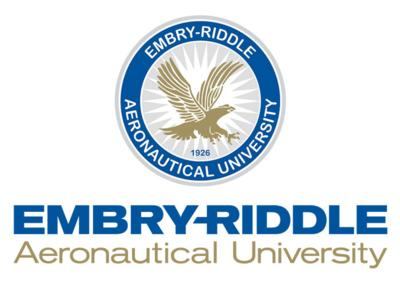To Prescott, and Beyond!
Founded in 1926 as a regional school for pilots and aircraft mechanics, Embry-Riddle Aeronautical University currently serves more than 32,000 undergraduate and graduate students. The private university’s main campuses—located in Daytona Beach, Florida and Prescott, Arizona—are supplemented by online programs and satellite locations.

On 16 April 2023, nine undergraduate students representing Embry-Riddle’s Prescott campus set multiple rocketry records, including that for the highest undergraduate and collegiate amateur liquid rocket launch in the United States, by launching a rocket dubbed Deneb to an altitude of 47,732-feet—thereby more than doubling the previous record of 22,000-feet.
During a total burn-time of 26.1-seconds, Deneb, which is named for a first-magnitude star in the constellation Cygnus, reached a velocity of 999.3-knots (Mach 1.5).
Over the year preceding the launch, the members of the Cygnus Suborbitals team—which comprises Ben Black, ground testing; Zoe Brand, propulsion; Dawson Damish, ground support equipment mechanisms; Tom De Vries, data acquisition and control; Kyle Dutcher, structures; Charles Flaherty, fluids; Duncan Shour, avionics and recovery; and Jared Walker, flight modeling, and team lead Dalton Songer—invested north of four-thousand man-hours designing, building, and testing Deneb’s various systems.
Two days prior to the record-setting launch, the group made camp in California’s Mojave desert for purpose of reassembling the rocket (after transport) and otherwise making ready to launch the contraption from the grounds of the Friends of Amateur Rocketry facility.
Three scrubbed launch attempts found the team frustrated, out of energy, short on time, and nearly out of the pressurant by which liquid oxygen/kerosene fuel is forced through Deneb’s engine induction system.
As pre-launch checks were performed and the team contended with failure’s increasing probability, a single thought persisted in team lead Dalton Songer’s mind: “This has to work.”
Assembled in the launch bunker, the Cygnus Suborbitals team reverentially joined in the countdown to their rocket’s ignition. As the countdown approached zero, a puff of smoke betokened the opening of propellant valves. An instant later, a dazzling flash of light and long, doppler-bent shriek proclaimed Deneb’s ascent.
Songer recalled: “It was gone in an instant, but watching Deneb take off was the most exhilarating moment of my life. We all ran out of the bunker to watch as Deneb burned farther and farther into the morning sky. It was breathtaking.”
Propulsion Laboratory and Rocket Test Complex director Dr. Elliott Bryner set forth: “I have been working with this group of students for the past four years, and they are incredible engineers.” Bryner confided that several Cygnus Suborbitals team members, upon graduation, are headed for full-time positions with top-tier entities such as SpaceX, Blue Origin, and Firefly Aerospace.
Embry-Riddle Mechanical Engineering department chair Andy Gerrick applauded the team’s accomplishment, stating: “This is the result of years of effort by the Cygnus team and countless others in the rocket program at Prescott. The amateur rocket community, prospective students, and employers will now recognize Embry-Riddle Prescott as a leader in rocket technology.”
The Cygnus Suborbitals team came together in a senior capstone propulsion design course taught by Doctors Daniel White and Jonathan Adams. In addition to its record-setting exploits, the team is part of the Rocket Development Lab (RDL), a student organization that promotes rocketry on campus and educates undergraduate students via hands-on initiatives.

The Cygnus Suborbitals team was the beneficiary of on-and-off-campus support from their fellow RDL students and Embry-Riddle faculty members who participated in the Deneb rocket’s construction to significant degrees. Financial backing and supplies for the record-breaking undertaking were generously provided by companies the likes of Dayton T. Brown, Inc., Firefly Aerospace, Summit Racing Equipment, Lockheed-Martin, Valworx, Inc. and Aqua Environment Co., Inc.
The first liquid rocket designed at Embry-Riddle’s Prescott Campus was designated Altair and built as a capstone project during the 2019-2020 school year. Regrettably, COVID-related shutdowns precluded its launch. In October 2022, when Altair finally did launch, the rocket exploded upon liftoff—after the fashion of a contemporary Disney film.
“We learned a lot from that rocket,” said Cygnus Orbitals team-member Zoe Brand, a mechanical engineering senior from Peoria, Illinois, formerly tasked with building and testing Deneb’s engine. “Altair was very heavy. So, we deliberately focused on making our rocket lighter by integrating the propellant tanks into the structural rigidity of the rocket.”
The Deneb team worked under tight deadlines to which mechanical engineering major and Cygnus Orbitals team-member Ben Black ascribed motivational value.
“A lot of people told us that our timelines were unrealistic and that we should be content with just getting the rocket to the test stand,” Black remarked. “But our level of scrappiness and get-it-done mentality meant the only option was to be successful.”
Dr. Daniel White, Embry-Riddle faculty mentor for the Deneb project, lauded the team’s camaraderie: “Their adaptability and mutual respect for one another were the two vital qualities that ultimately enabled the team to deliver a successful launch demonstration. Going forward, we expect great things from the members of this team as they begin to contribute to industry in their various fields of study.”
Songer doubts he’ll forget watching Deneb’s launch. “I fell to my knees, sobbing, from witnessing such an incredible feat,” he conceded. “Everyone was celebrating in a giant group hug. That moment was special. Something that only happens when a dedicated group of individuals come together and make something incredible happen against all odds.”
 ANN's Daily Aero-Term (04.25.24): Airport Rotating Beacon
ANN's Daily Aero-Term (04.25.24): Airport Rotating Beacon ANN's Daily Aero-Linx (04.25.24)
ANN's Daily Aero-Linx (04.25.24) Klyde Morris (04.22.24)
Klyde Morris (04.22.24) Airborne 04.24.24: INTEGRAL E, Elixir USA, M700 RVSM
Airborne 04.24.24: INTEGRAL E, Elixir USA, M700 RVSM Airborne 04.22.24: Rotor X Worsens, Airport Fees 4 FNB?, USMC Drone Pilot
Airborne 04.22.24: Rotor X Worsens, Airport Fees 4 FNB?, USMC Drone Pilot




